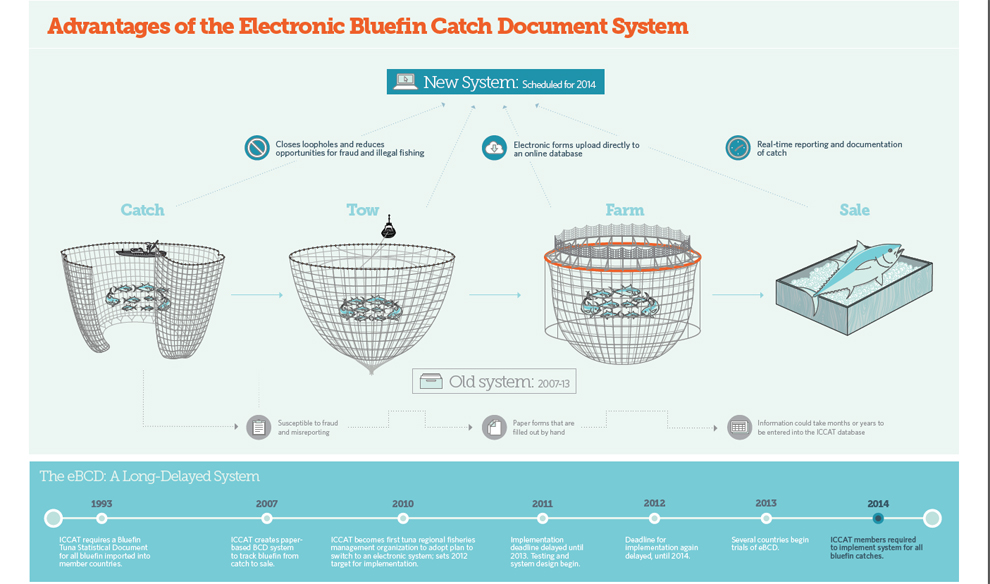Electronic Bluefin Catch Documentation
Illegal fishing of bluefin tuna remains a big problem in the Atlantic Ocean. A recent scientific study estimated that between 2008 and 2011, the actual catch of bluefin in the eastern Atlantic and the Mediterranean Sea exceeded the quota by 57 percent.1 In the first five months of 2013, numerous media reports documented the seizure of multiple shipments of illegally caught bluefin by Italian authorities.
The International Commission for the Conservation of Atlantic Tunas, or ICCAT, created the Bluefin Catch Document system, or BCD, in 2007 to trace bluefin caught in waters managed by the commission. Tracking the catch, its movement, and bluefin trade is one of the best ways to monitor the fishery, enforce quotas, and identify and reduce illegal fishing. This paper-based system has been slow, cumbersome, and filled with loopholes that allow for misreporting or fraud. The process has sometimes been completed months or years after the catch occurred and has been complicated by forms filled out incorrectly or illegibly.
In 2010, ICCAT formed a working group to design a fully electronic replacement. This new eBCD system requires electronic forms and real-time reporting and will reduce opportunities for fraud. Trials of the system by several nations are underway, but there is concern that many governments will not meet the March 2014 deadline for full implementation. The eBCD has the potential to be the gold standard of tracking systems if fully implemented by all ICCAT members. To combat illegal fishing, it is vital that all members abide by the agreed-upon deadline.
At the November 2013 ICCAT meeting in Cape Town, South Africa, ICCAT members should:
- Maintain the implementation deadline. Further delays in fully implementing the electronic system would limit its effectiveness by reducing the percentage of catch tracked and require Secretariat staff to continue entering paper documents into the system by hand.
- Require that all catch be entered and tracked. To ensure comprehensive accounting and eliminate loopholes, all catch, regardless of its origin and destination, must be fully recorded.
- Renew their commitment to eliminating illegal fishing. ICCAT members should continue to strengthen monitoring efforts, reduce vessel capacity, and sanction vessels involved in illegal fishing.

Download the Infographic (PDF)
End notes
1 Antonius Gagern, Jeroen van den Bergh, and Ussif Rashid Sumaila, “Trade-Based Estimation of Bluefin Tuna Catches in the Eastern Atlantic and Mediterranean, 2005–2011,” PLOS ONE 8(7) (2013), doi:10.1371/journal.pone.0069959, http://www.plosone.org/article/info%3Adoi%2F10.1371%2Fjournal.pone.0069959.











